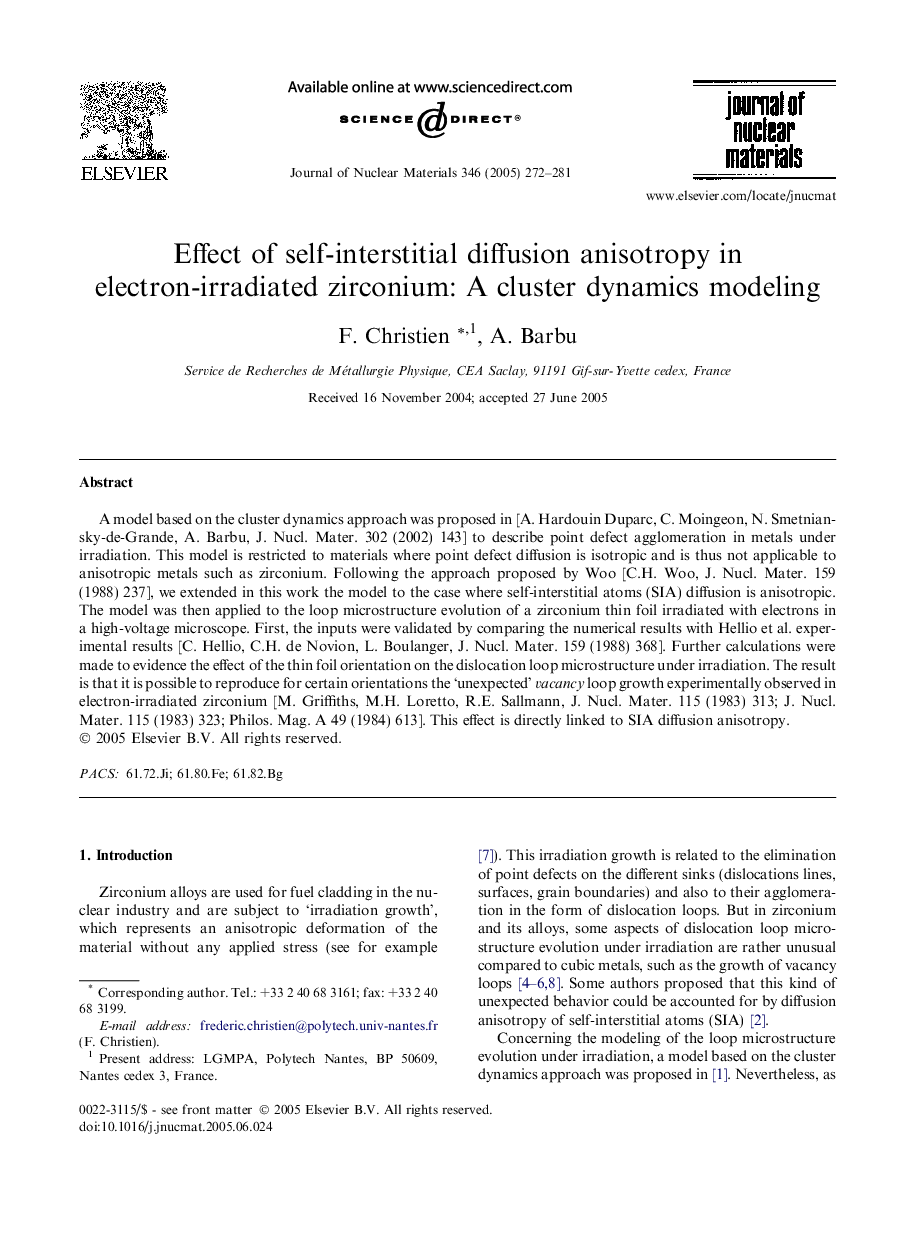| Article ID | Journal | Published Year | Pages | File Type |
|---|---|---|---|---|
| 9793589 | Journal of Nuclear Materials | 2005 | 10 Pages |
Abstract
A model based on the cluster dynamics approach was proposed in [A. Hardouin Duparc, C. Moingeon, N. Smetniansky-de-Grande, A. Barbu, J. Nucl. Mater. 302 (2002) 143] to describe point defect agglomeration in metals under irradiation. This model is restricted to materials where point defect diffusion is isotropic and is thus not applicable to anisotropic metals such as zirconium. Following the approach proposed by Woo [C.H. Woo, J. Nucl. Mater. 159 (1988) 237], we extended in this work the model to the case where self-interstitial atoms (SIA) diffusion is anisotropic. The model was then applied to the loop microstructure evolution of a zirconium thin foil irradiated with electrons in a high-voltage microscope. First, the inputs were validated by comparing the numerical results with Hellio et al. experimental results [C. Hellio, C.H. de Novion, L. Boulanger, J. Nucl. Mater. 159 (1988) 368]. Further calculations were made to evidence the effect of the thin foil orientation on the dislocation loop microstructure under irradiation. The result is that it is possible to reproduce for certain orientations the 'unexpected' vacancy loop growth experimentally observed in electron-irradiated zirconium [M. Griffiths, M.H. Loretto, R.E. Sallmann, J. Nucl. Mater. 115 (1983) 313; J. Nucl. Mater. 115 (1983) 323; Philos. Mag. A 49 (1984) 613]. This effect is directly linked to SIA diffusion anisotropy.
Related Topics
Physical Sciences and Engineering
Energy
Nuclear Energy and Engineering
Authors
F. Christien, A. Barbu,
